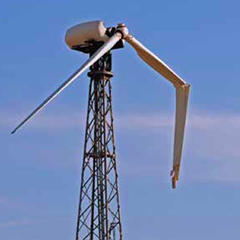Research and guidance on restoration and decommissioning
of onshore wind turbines.
In 2010, Scottish Natural Heritage (SNH) published guidance on good practice during wind farm construction – a report that was embraced by operators the world over. Today, the organisation has crafted a report that covers the other end of a wind farm’s life cycle – decommissioning. We consulted the experts for some tips…
Background
In general, it has been found that restoration and decommissioning is not being given adequate or consistent coverage; there is a need for more detailed description of preferred options and the environmental impacts associated with these; and that quantification and source of restoration materials is insufficient. Onshore wind farms are often described as being relatively easy to decommission and having no legacy of pollution.
However, if the restorability of the site is questionable the appropriateness of the original development may also be questioned.
Internationally, Erin Gill writes that there are concerns that: “The wind energy industry is right to portray itself as a “clean” and genuinely green energy sector. However, with this image comes the responsibility of making sure that the sector does not rest on its environmentally sound laurels…
With the first generation of modern wind farms having been built in Germany, Denmark and California in the late 1980s, these three locations will be at the forefront of dealing with waste and recycling issues as old wind farms are dismantled or, in most cases, repowered…To date, attention in the US has focused on the costs of eventual site restoration and ensuring that financial liability for these costs is properly assigned prior to wind-farm commissioning.”
More recently, in Scotland, Alistair Munro writes in the Scotsman (23.10.12), that evidence is being sought by stakeholders for clarity on the restoration and decommissioning process before planning consent is given. The wind energy industry is also showing early indications of repowering of sites commencing.
Repowering
Repowering generally involves the dismantling of existing turbines and replacing them with more efficient turbines which may be larger and fewer. Restoration and decommissioning is the focus of the research described in this report, but consideration of repowering is relevant as many of the same engineering, hydrological, ecological, and landscape issues will arise and a similar step-by-step process may help ensure that these are addressed systematically.
It is also possible that many wind farm sites in Scotland will be repowered rather than completely decommissioned.
Requirements, drivers and the scale of activity for repowering are of interest in the context of the continued sustainable development of renewable energy. In countries like Germany, Denmark, or the Netherlands, wind power is already so widespread that few onshore sites are left on which new units can be built.
In these countries, it is more efficient for investors to replace smaller and mid-sized turbines on highly productive sites with newer and larger turbines, rather than just building the new turbines on less productive sites. (European Copper Institute, Walter Hulshorst, 2008).



























